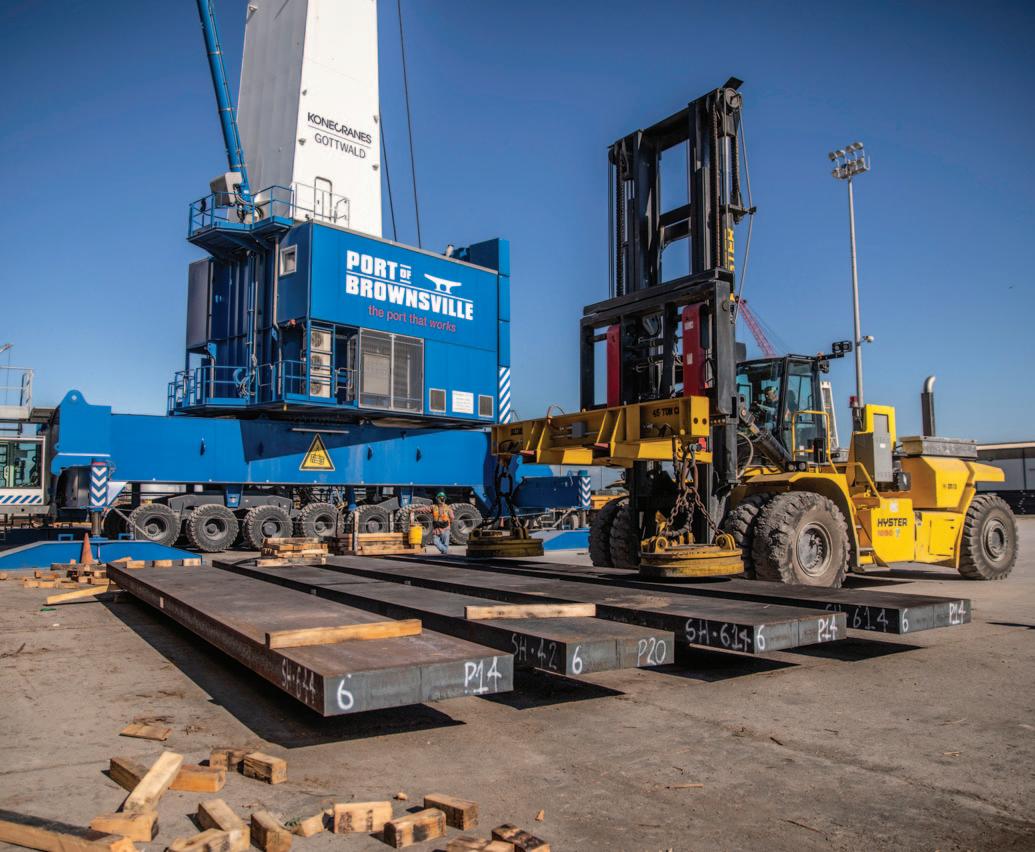
2 minute read
Port of Brownsville: playing a pivotal role in North American trade
The Port of Brownsville’s proximity to Mexico uniquely positions the port to serve as the key transshipment gateway delivering goods and materials to nearby multinational manufacturing centres on both sides of the border. This has led the port to rank among the leading US steel ports, moving more steel into Mexico than any other domestic competitor. In 2021, the port moved more than 4.3mt (million tonnes) of steel across the southern border.
This volume is projected to increase to more than 5mt in 2023. The increase in steel throughput is tied to the development and expansion of Ternium de Mexico’s industrial Center located in Pesquería, right outside the Monterrey, Mx, metropolitan area. The company is utilizing the Port of Brownsville for receiving, staging, and shipping all the steel slab processed at its plant, one of the most modern industrial complexes in the world that supports the automotive, construction and white appliances industries in Mexico. The port worked together with Ternium, port stevedore Gulf Stream Marine, the Brownsville Rio Grande International Railway (BRG), OmniTRAX, and Class 1 Rail Provider Kansas City Southern de México, on a major terminal development to maximize the efficient loading of opentop gondola railcars and expedite steel slab shipments to feed Ternium’s mill in Pesquería.
In addition to growing exports of steel, the port experienced a steady flow of bulk cargo in 2022. Year-to-date stats indicate that more than 5.5mt of diverse bulk cargo moved through the port’s docks on its way to Mexico, Canada, and domestic markets. This cargo includes: alumina, aluminum ingots, baryte, bauxite, breeze coke, cement, corn, fluorspar, limestone, pig iron, rice, rutile sand, steel coils, steel slab, sugar, and wind energy components.
After years of effort, planning and success, the Port of Brownsville is ready to begin one of its most important infrastructure projects to date, the Brazos Island Harbor Channel Improvement Project. The U.S. Army Corps of Engineers and the U.S. Congress have authorized the deepening of the port’s channel from 42 feet to 52 feet. The project is divided into two phases and was expected to commence at the end of 2022. Deepening the port’s channel means bigger ships, more cargo, and more jobs for the South Texas region.
Other continued investments include the completed rehabilitation of Bulk Cargo Dock, improving access to the 3-millionbushel grain elevator operated by WestPlains LLC. In 2020, the U.S. Maritime
Administration awarded the port a $14.5 million grant to improve railroad, road and shiploading infrastructure at the Bulk Cargo Dock and further expand WestPlains’ grain handling operations at the facility. The company and the port are partnering to modernize and enhance the operational capacity of the specialized dock, with shared investments of more than $13 million to date, in an effort to create a new cost-efficient port option for all US farmers to load outbound international vessels from the Port of Brownsville.
The expansion of additional outside storage capacity continues at the port, now totalling more than 62-acres of purposebuilt facilities to accommodate heavy point-load-bearing cargo, like wind energy nacelles – some weighing more than 112 tonnes each. Along with hubs, tower sections and windmill blades (the largest reaching 265-feet-long), the Port of Brownsville ranks among the foremost US ports capable of receiving, storing and moving these massive components by vessel, barge, rail or truck in the US, Canada or Mexico.










